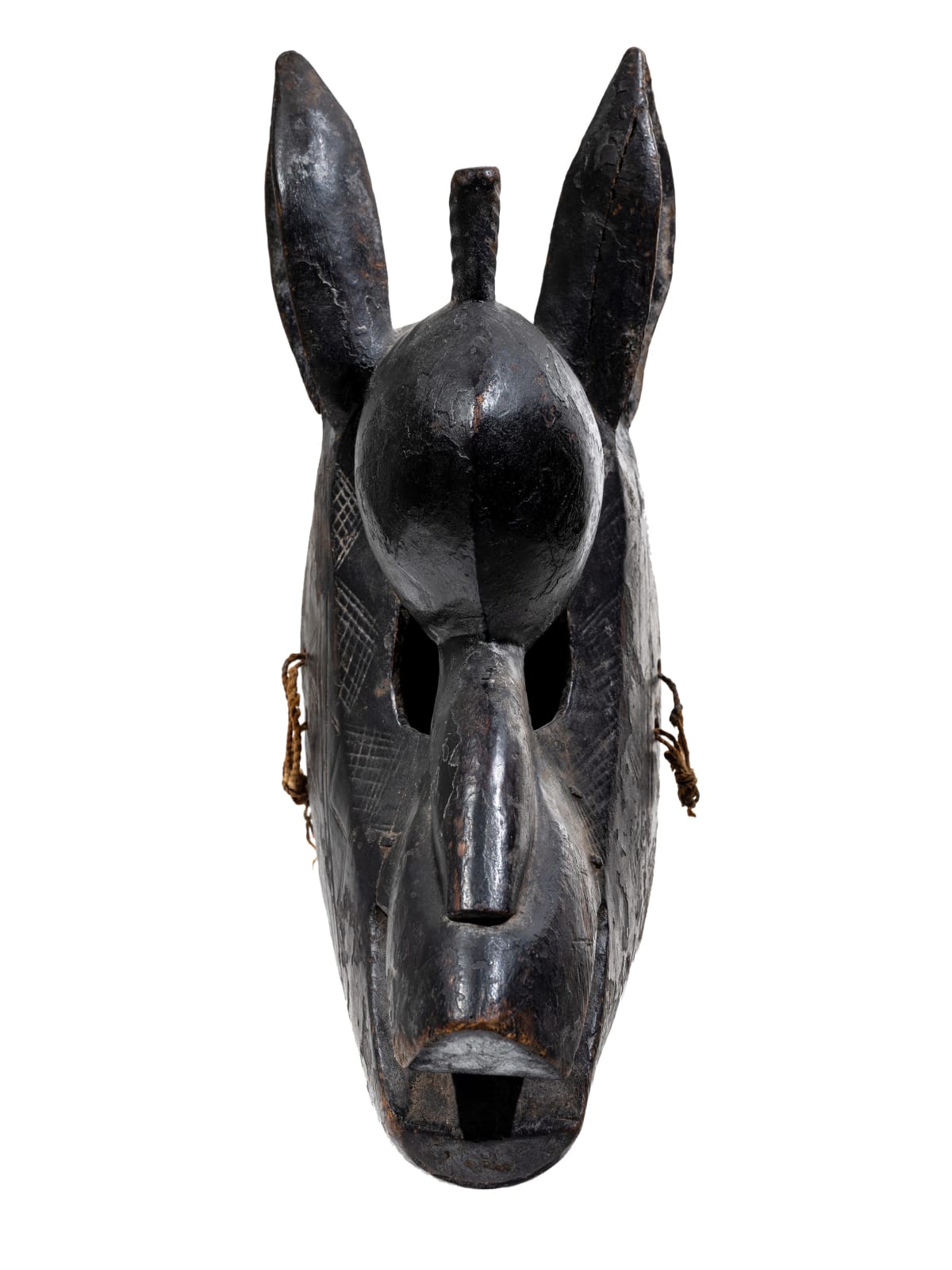Anonymous artist
Bamana Mask
Wood
Origin: Mali
“Nr. 59” in white ink on inside
Origin: Mali
“Nr. 59” in white ink on inside
height 41 cm
height 16 1/8 in
height 16 1/8 in
Copyright Duende Art Projects
Photo: Valentin Clavairolles
Further images
Mali’s Bamana people knew six different men’s associations (known collectively as jow) that served to regulate society, initiate, instruct, and inform men in the complexities of religion and philosophy in...
Mali’s Bamana people knew six different men’s associations (known collectively as jow) that served to regulate society, initiate, instruct, and inform men in the complexities of religion and philosophy in their quest for wisdom and spiritual fulfillment. The completion of intellectual and spiritual education offered by these societies took place within the final one, the koré. Masks such as this one were worn during the korè initiation. Every seven years a group of teenagers undergo this initiation and are resuscitated as adults. During this time in the bush, they learn about herbal medicine, sexuality, the cycle of life, and their obligations towards the elders and ancestors. After the koré initiation, boys indeed were considered men. Besides being used during the initiation, masks and other ritual equipment were also kept in the koré sacred grove where annual rituals devoted to rainmaking and good harvests took place at the end of the dry season. There is no fixed style of koré mask, and a number of animals are represented in diverse sculptural forms. Because of its muzzle, this old, well-used and often repaired mask has been considered to represent a stylized horse. Horse masks, or sokun, represented the tenacity of spirit essential to successful agriculture. However, the structural components of this mask can also be interpreted as a synthesis of several animals at once. It is not unlike some hyena (suruku) masks, an animal linked to greed and insatiableness. The hyena symbolizes the limited, day-to-day human knowledge far removed from divine wisdom. He who wishes to attain this wisdom - and this is the goal of the initiated - should be equipped with self-knowledge and self-control and willing to devote himself to the search for true wisdom. On a symbolic level, like the animal depicted, the broad forehead expresses the animal’s intelligence. The protuberance on the top of the head is said to refer to the tuft of hair that the hyena has on its head and that the hunter took from it after having killed it because it is supposed to contain a dangerous vital force. The masks’ deep patina attests to its age and ancient ritual treatment, while the pure and elegant lines of this mask translate a modernity before its time. A very similar mask can be found in the Menil Collection in Houston (inventory number 70-030 DJ).
Provenance
Lucien Van de Velde, Antwerp, 1975
Cees Van Strien Collection
By descent through family, 2022
Exhibitions
Sculpture from Africa and Oceania, Rijksmuseum Kröller- Müller, Otterlo, 17 november 1990-20 january 1991Publications
Van Kooten (Toos) et van den Heuvel (Gerard), eds., Sculpture from Africa and Oceania, Rijksmuseum Kröller- Müller, Otterlo, 1990, #4let's keep in touch
Join our community & never miss out on a DUENDE moment from now on
* denotes required fields
We will process the personal data you have supplied to communicate with you in accordance with our Privacy Policy. You can unsubscribe or change your preferences at any time by clicking the link in our emails.









